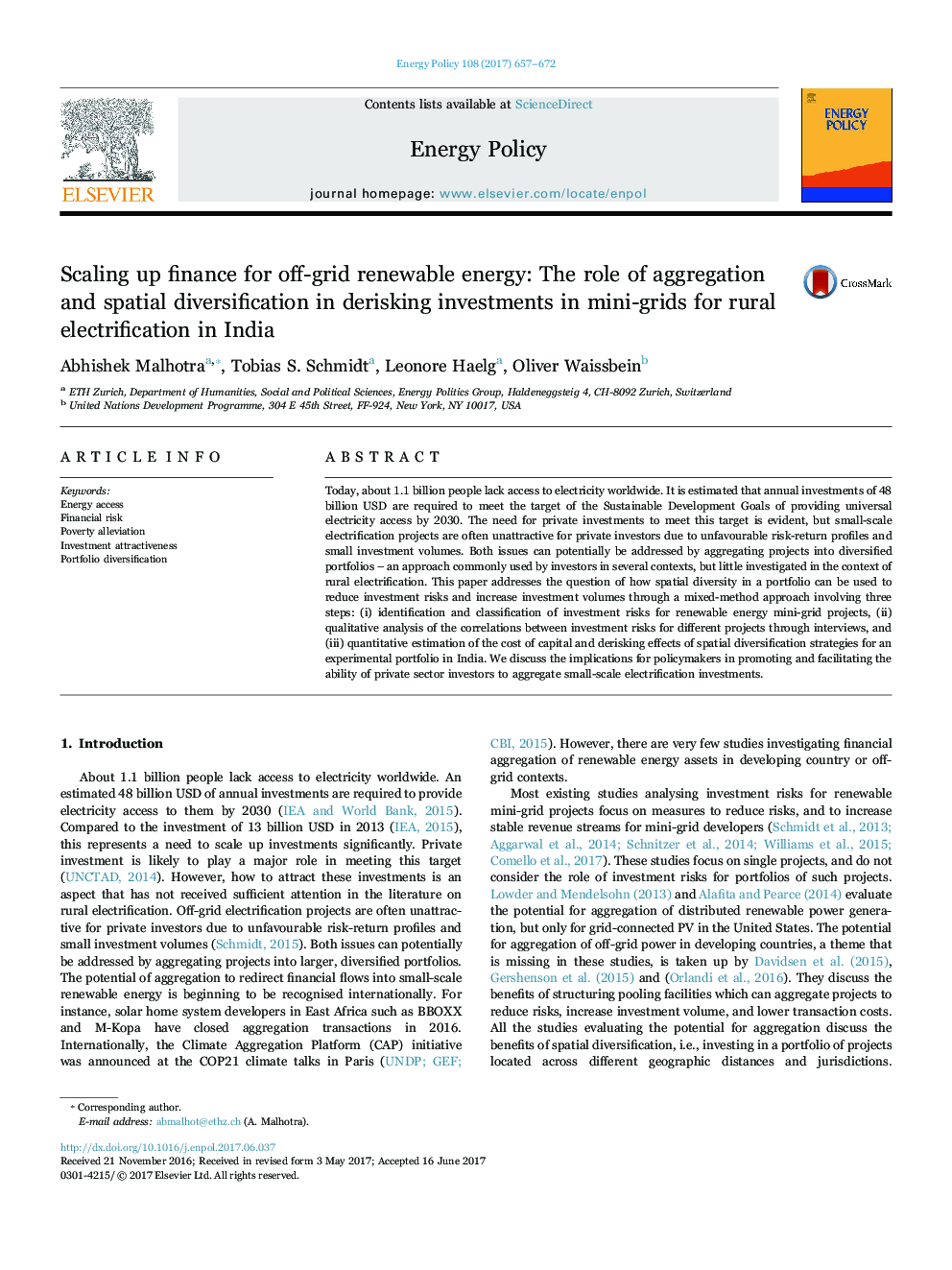| Article ID | Journal | Published Year | Pages | File Type |
|---|---|---|---|---|
| 5105664 | Energy Policy | 2017 | 16 Pages |
Abstract
Today, about 1.1 billion people lack access to electricity worldwide. It is estimated that annual investments of 48 billion USD are required to meet the target of the Sustainable Development Goals of providing universal electricity access by 2030. The need for private investments to meet this target is evident, but small-scale electrification projects are often unattractive for private investors due to unfavourable risk-return profiles and small investment volumes. Both issues can potentially be addressed by aggregating projects into diversified portfolios - an approach commonly used by investors in several contexts, but little investigated in the context of rural electrification. This paper addresses the question of how spatial diversity in a portfolio can be used to reduce investment risks and increase investment volumes through a mixed-method approach involving three steps: (i) identification and classification of investment risks for renewable energy mini-grid projects, (ii) qualitative analysis of the correlations between investment risks for different projects through interviews, and (iii) quantitative estimation of the cost of capital and derisking effects of spatial diversification strategies for an experimental portfolio in India. We discuss the implications for policymakers in promoting and facilitating the ability of private sector investors to aggregate small-scale electrification investments.
Related Topics
Physical Sciences and Engineering
Energy
Energy Engineering and Power Technology
Authors
Abhishek Malhotra, Tobias S. Schmidt, Leonore Haelg, Oliver Waissbein,
